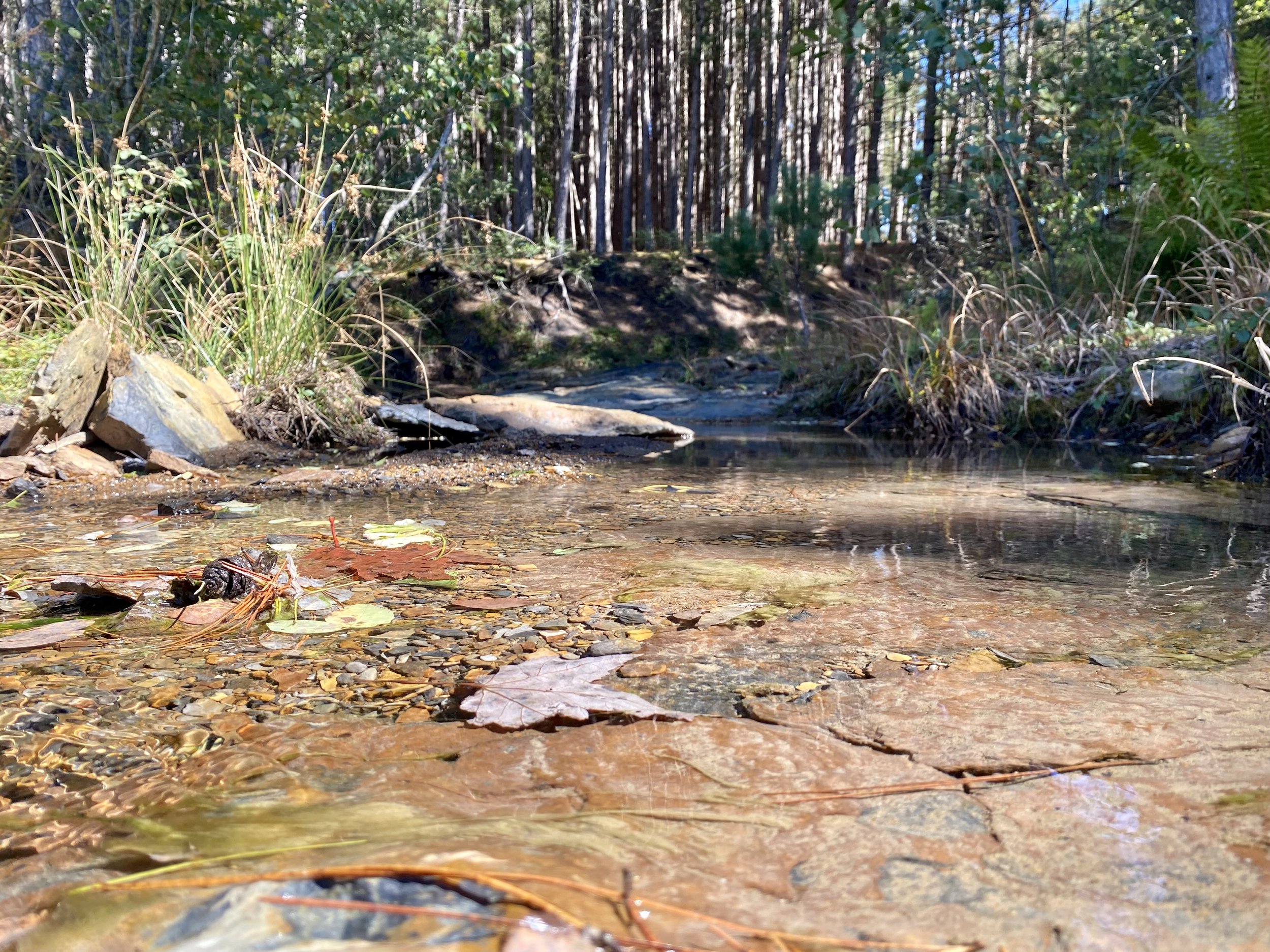
Passive Treatment Planning & Construction for Seep 100-2
Beaver Creek is considered impaired on the 2014 303 (d) list for aluminum, iron, pH, fecal coliform, and biological impairment. AMD affects human health by degrading human drinking water supplies and is toxic to all forms of aquatic life. Based on the 2011 Cheat River TMDL, at the mouth of Beaver Creek load allocations need to be reduced by 52.5 and 53.7 percent for aluminum and iron respectively.
Mining in the Upper Freeport Coal Seam usually exposes pyrite to air, leading to pyrite oxidation, generation of sulfuric acid, and dissolution of metals from pyrite and other minerals. This Coal Seam crops out near Beaver Creek, a tributary to the Blackwater River in Tucker County, WV. Extensive strip mining has polluted Beaver Creek with acid mine drainage, including iron, dissolved aluminum, and acidity. The Beaver Creek watershed contains seven such discharges from abandoned mining areas, of various severity.
The context.
Seep 100-2 is the specific source of acid mine drainage that we are targeting in this project. Seep 100-2 receives diffuse AMD along nearly its entire length, is highly acidic, and contains moderate levels of iron and aluminum (and manganese).
FOB will use its own procurement procedures and to hire an engineer to produce plans and specifications for an AMD treatment project.
FOB has already determined the quality and quantity of the AMD discharging from the site.
Our work plan.
We anticipate that project will consist of open limestone channel to collect all the drainage and limit its interaction with the spoil as it flows to a drainable limestone leachbed. The leachbed will be sized so that it generates enough alkalinity to neutralize the load of acidity (approximately 41,000 lbs/year) flowing from the site. The leachbed will discharge into a settling pond, in which aluminum and iron hydroxides will precipitate out of the water column. There will be a second process for selecting a contractor to complete the construction work, again following established procurement procedures. FOB will be responsible for oversight of and communication with the selected contractor to ensure proper completion of desired services within the timeline and budget constraints.
Following construction, FOB will visit the site, assess the load reduction, and negotiate with the contractor for any minor adjustments needed. FOB will maintain the relevant field logs, calibration logs, chain of custody forms, and laboratory results as electronic and hardcopies accessible in the FOB offices. Data will be submitted into a database management system and maintained by the project manager in accordance with FOB’s QAPP. In addition, throughout this process FOB will author reports and comply with all reporting requirements issued by WVDEP and OSMRE.






